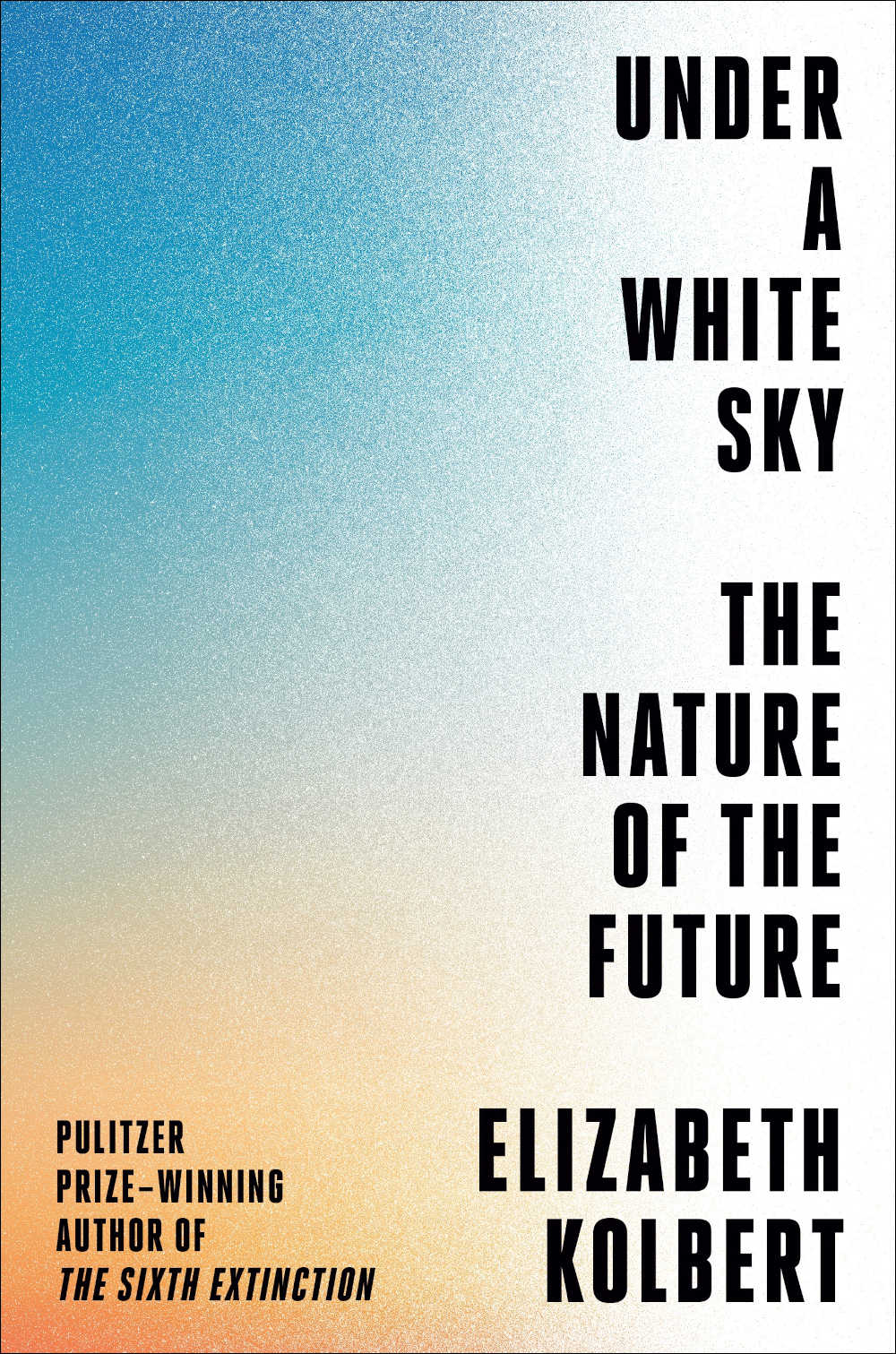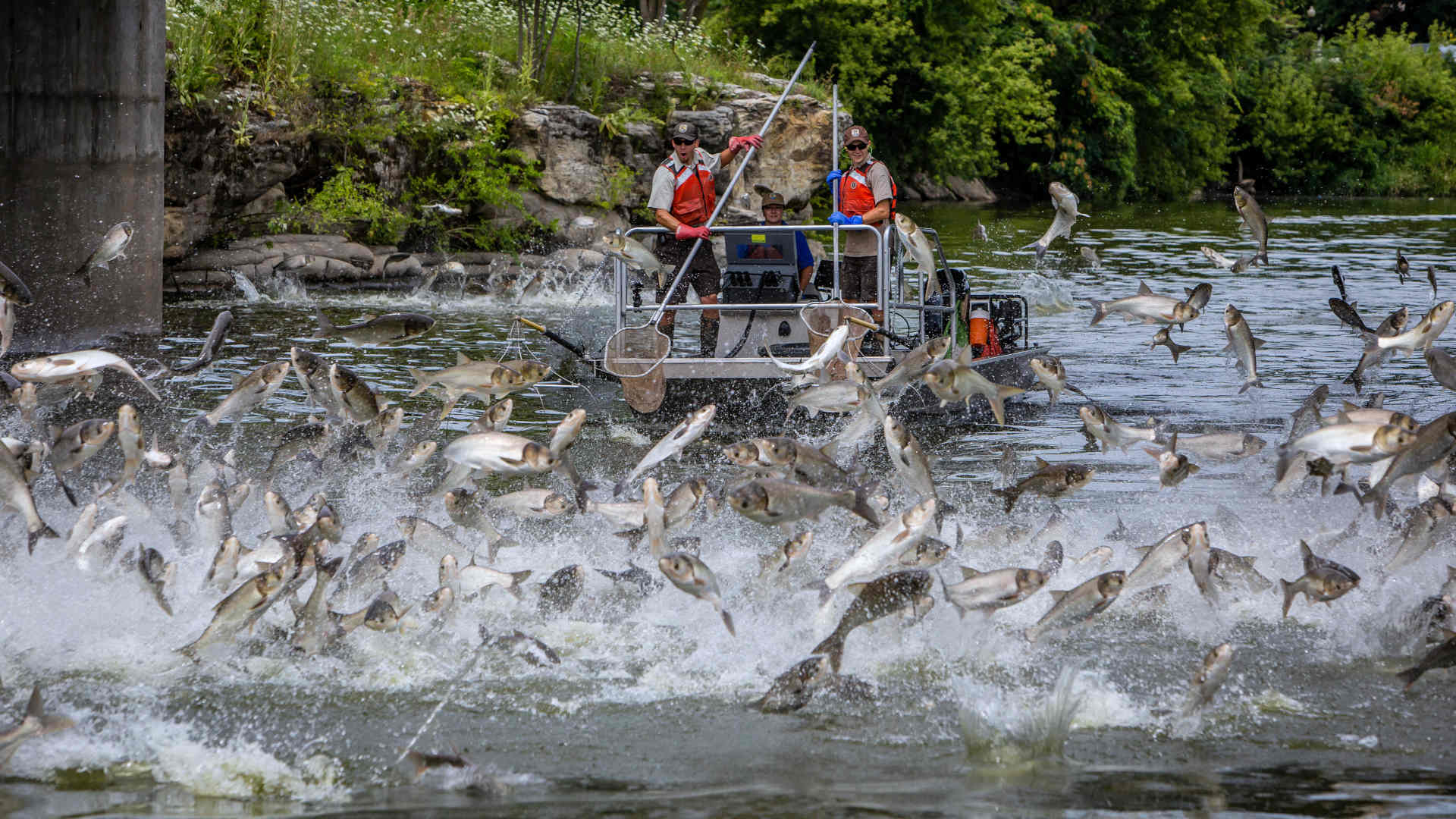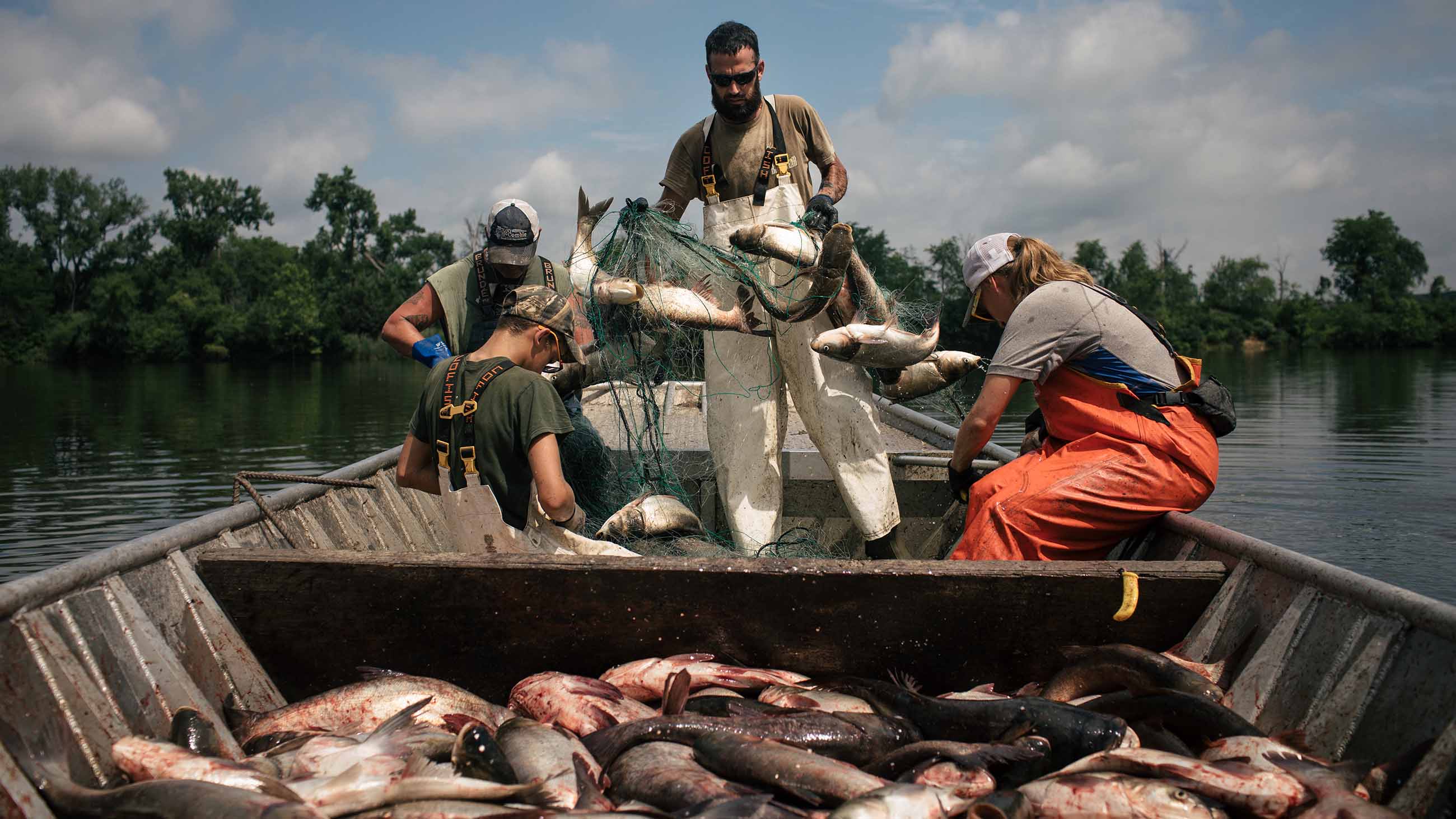Elizabeth Kolbert lives her stories. In the course of reporting her new book, “Under a White Sky: The Nature of the Future,” she got hit by a leaping carp near Ottawa, Illinois (“It felt like someone had slammed me in the shin with a Wiffle-ball bat”) and visited tiny endangered pupfish at Devils Hole, a small pool in a cave near Pahrump, Nevada. She got her socks wet walking across a mockup of the Lower Mississippi in Baton Rouge, Louisiana, and watched corals reefs spawn at an ocean simulator in Australia.

BOOK REVIEW — “Under a White Sky: The Nature of the Future,” by Elizabeth Kolbert (Crown, 256 pages).
With her lively, vivid writing, Kolbert is one of the nation’s most high-profile science writers. Her Pulitzer Prize-winning 2014 book “The Sixth Extinction” made the disappearance of species understandable and urgent. She writes for The New Yorker, where portions of “Under a White Sky” first appeared. But even if some of it was familiar to me — both as a reader of The New Yorker and as a science writer who covers some of the same topics myself — I wanted to read it through, to see these pieces come together into an overarching argument.
In each of these trips, she tells of disaster — of invasive species and endangered ones, of coral bleaching, of the rapid land loss in south Louisiana. Disasters caused by us. The thought at the center of this wonderful book is that not only do we humans do a lot of damage to the planet, some of the worst damage we do occurs when we’re trying to fix things. As she puts it, this is a book “about people trying to solve problems created by people trying to solve problems.”
Why do we need to rebuild a sinking Louisiana? In large part because we solved the problem of seasonal flooding by penning the river between enormous levees, which meant the land-building sediment that came with those floods no longer arrived. The oil industry also cut channels into the fragile wetlands for exploration and extraction. That accelerated erosion added to the climate change that is causing sea levels to rise, much to Louisiana’s detriment.
Why are people like her getting slammed by leaping Asian carp? The fish, which are out-competing other fish in American waters, were introduced as a natural way to control algae and other aquatic problems; of course, the carp have become an enormous invasive species problem of their own, and expensive technologies have been developed to keep them from reaching the Great Lakes. Those include giant multimillion-dollar projects to electrify the waters, and plans to roil the waters with bubbles and noise — together, they show how we just keep out-Rube-Goldberging ourselves.
She visits the Old River Control Structure, made infamous by John McPhee in his 1989 bestseller “The Control of Nature” as an attempt to tame the mighty Mississippi River. It was designed to precisely regulate the amount of water flowing from the Mississippi into the Atchafalaya and prevent the natural transition that would eventually have directed increasing amounts of the Mississippi’s waters into the Atchafalaya, with its shorter, steeper path to the sea, rendering the vast ports of Baton Rouge and New Orleans useless. But in 1973 the structure nearly failed, which would have been its own kind of disaster.
Kolbert asks whether our meddling has blurred the lines between the natural world and the managed one. In the Anthropocene era, when humans have fundamentally altered the planet and its environment, she asks, what does nature even mean anymore? Nature, she notes, tends to reward our hubris with hard lessons. “A lot has happened to complicate the meaning of ‘control,’ not to mention ‘nature.’”
She describes other interventions gone horrifyingly wrong, including the introduction in the 1930s of enormous cane toads to Australia to eat grubs off of sugar cane. But, as it turns out, cane grubs “perch too high off the ground for a boulder-sized amphibian to reach. This didn’t faze the toads. They found plenty else to eat and continued to produce toadlets by the truckload.” The spread of the poisonous toads has been epic, and scientists are experimenting with genetic modifications that might check their spread, or at least make them less toxic. And of course, there are those Asian carp.
Kolbert compares our efforts to repair the damage we have inflicted on the planet to “The Cat in the Hat Comes Back,” the Dr. Seuss children’s story in which the cat causes a mess — a pink ring in the bathtub — and his efforts to clean it up in escalating ways, beginning with the use of the mother’s white dress to wipe up the ring, only make things worse.
We are the cat, she says. Looking at the enormous effort the government has gone through to save those dwindling species of pupfish, she observes “how much easier it is to ruin an ecological system than to run one.”
This is all leading up to what could be our greatest human-produced crisis — climate change — and what could be the biggest intervention of all: solar geoengineering. Should we try to tweak the atmosphere to slightly dim the amount of solar radiation that reaches the surface of our planet, and thus slow the effects of global warming until we can get our greenhouse gas emissions under control?
She describes some of the ideas that have been floated, including spraying particles of sulfur, or calcium carbonate, or even finely milled diamonds, into the atmosphere. As she mentions, the resulting changes could also include turning the color of the sky from blue to white. You might think by now that she would deliver a full-throated cry against geoengineering. What she gives us instead is less certain, more nuanced — and more troubling.
Yes, she quotes Allison Macfarlane, a former chairwoman of the Nuclear Regulatory Commission, who gives the idea a thumbs down over the unintended consequences. But she also quotes those who say that we may be in such a deep planetary crisis that hacking the atmosphere itself might be the least horrible option, considering where the planet is headed. Among them is a scientist who compares it to chemotherapy, which no one would go through if there were better options available. “We live in a world,” he said, “where deliberately dimming the fucking sun might be less risky than not doing it.”
Kolbert writes, “But to imagine that ‘dimming the fucking sun’ could be less dangerous than not dimming it, you have to imagine not only that the technology will work according to plan but also that it will be deployed according to plan. And that’s a lot of imagining.”
She’s no fan of the idea, clearly. But she also suggests that the world might find its options so narrowed by inaction that it has little choice but to turn the sky white. Just don’t blame her if everything goes terribly, terribly wrong. Again.
In her passing reference to “The Cat in the Hat,” Kolbert doesn’t mention that the story ends when the cat uses Voom, a substance that magically gets rid of the ever-spreading pink mess and even shovels the snow around the house before Mother gets home.
Voom, unfortunately, is one thing we do not have.
DISCLOSURE: The author of this review briefly met Elizabeth Kolbert on a reporting trip in 2020, but no other interaction or relationship exists outside this chance meeting.
John Schwartz writes about climate change for The New York Times. He is the author of “This Is the Year I Put My Financial Life in Order.”












Comments are automatically closed one year after article publication. Archived comments are below.
I’m glad you and Kolbert mentioned McPhee’s book. It’s wonderful. I’m an engineer. I especially liked his understanding of the engineering issues along with impacts to people and the environment.